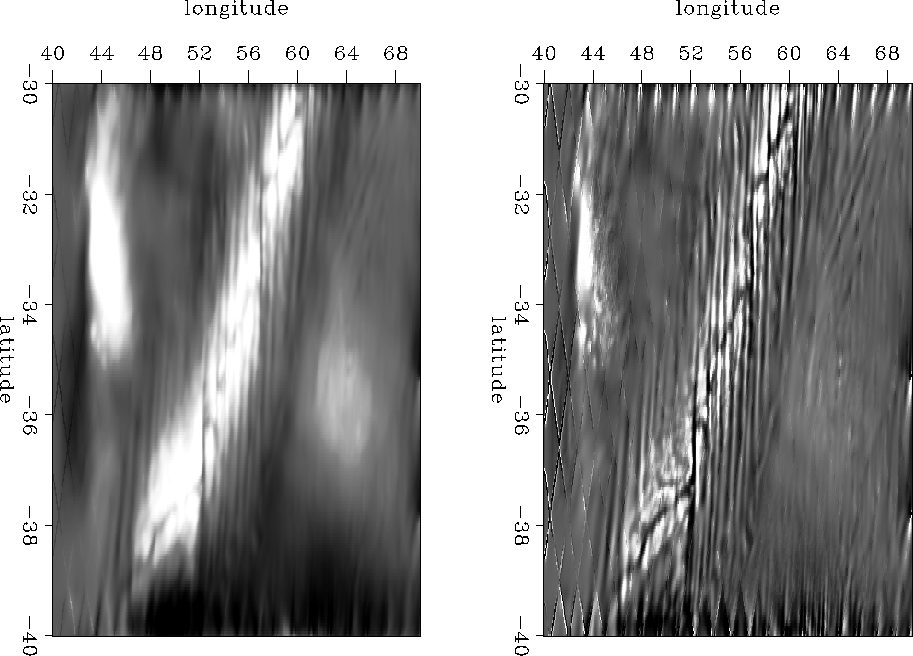




Next: conclusion
Up: Lomask: Estimating a 2D
Previous: Test results
There are still several ways of improving this method to be investigated. For instance, we could start with a smaller PEF and gradually increase its size, iteratively recalculating a new 2D PEF in a similar bootstrapping approach. Also, it would be prudent to come up with a good way of finding the data scale to balance the filter and the missing data. This would probably depend on the relative size of the data and filter. Lastly, for this technique to be useful on seismic data, it has to be able solve the non-stationary problem. We could possibly use this stationary PEF as a starting guess for non-stationary problem. Using code adapted from Clapp (2000), a non-stationary PEF is estimated on the dense data and used to fill in the sparse data in Figure ![[*]](http://sepwww.stanford.edu/latex2html/cross_ref_motif.gif) . Although this figure was created using the dense data, it illustrates what we hope to achieve with a non-stationary PEF estimated on sparse data tracks.
non_station.fill
. Although this figure was created using the dense data, it illustrates what we hope to achieve with a non-stationary PEF estimated on sparse data tracks.
non_station.fill
Figure 15 The result of filling the sparse tracks in the Right of Figure ![[*]](http://sepwww.stanford.edu/latex2html/cross_ref_motif.gif) with a non-stationary 2D PEF estimated on the dense data in Figure
with a non-stationary 2D PEF estimated on the dense data in Figure ![[*]](http://sepwww.stanford.edu/latex2html/cross_ref_motif.gif) .
.
![[*]](http://sepwww.stanford.edu/latex2html/movie.gif)










Next: conclusion
Up: Lomask: Estimating a 2D
Previous: Test results
Stanford Exploration Project
10/23/2004

![[*]](http://sepwww.stanford.edu/latex2html/cross_ref_motif.gif) with a non-stationary 2D PEF estimated on the dense data in Figure
with a non-stationary 2D PEF estimated on the dense data in Figure ![[*]](http://sepwww.stanford.edu/latex2html/cross_ref_motif.gif) .
.
![[*]](http://sepwww.stanford.edu/latex2html/cross_ref_motif.gif) . Although this figure was created using the dense data, it illustrates what we hope to achieve with a non-stationary PEF estimated on sparse data tracks.
. Although this figure was created using the dense data, it illustrates what we hope to achieve with a non-stationary PEF estimated on sparse data tracks.

![[*]](http://sepwww.stanford.edu/latex2html/cross_ref_motif.gif) with a non-stationary 2D PEF estimated on the dense data in Figure
with a non-stationary 2D PEF estimated on the dense data in Figure ![[*]](http://sepwww.stanford.edu/latex2html/cross_ref_motif.gif) .
.